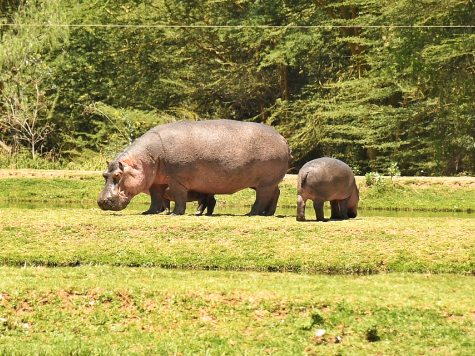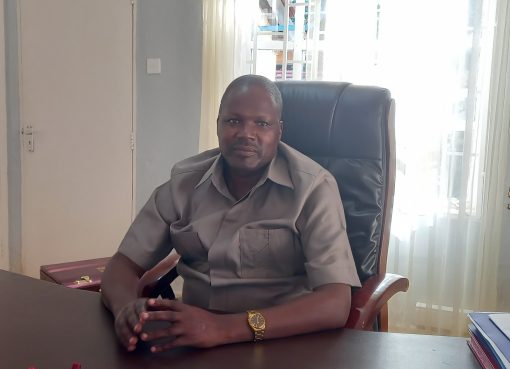Employees of the Naivasha Water and Sewerage Company (NAIVAWASCO) on Monday protested over the death of their colleagues after a rogue hippo attacked him while at his duty station at the Naivasha Sewerage treatment plant.
Preliminary reports into the tragic incident indicated that 45-year-old Francis Wachira was working at the treatment plant around midday last Friday when a hippo suddenly appeared and attacked him.
The deceased who sustained serious injuries after the animal trampled on him before throwing him into the sewer pond, however, succumbed to his injuries while undergoing treatment at Kijabe hospital where he was rushed after being rescued.
According to Antony Njogu, a colleague to the deceased, Wachira was attacked while on his way to the office after winding up his assignment at the treatment plant.
The NAIVAWASCO employees are now demanding the relocation of the hippos from Lake Naivasha as they have become a menace not only to the employees but also to the residents of Naivasha.
They are also demanding compensation from the Kenya Wildlife Service (KWS) for the family of the late Wachira.
“Wachira has left a young family who have been left widowed and orphaned without a source of livelihood after losing a bread earner,” Njogu lamented.
Lakeview Ward Member of the County Assembly (MCA) Alex Mbugua who joined the employees in demanding justice for the late Wachira called upon the Kenya Wildlife Service (KWS) to move the animals from the lake to avert future attacks.
It also emerged that a primary school pupil is nursing serious injuries in hospital after he was attacked by hippos in the same area a couple of days ago. Indeed several people, mostly fishermen have been reported having been attacked on the lake by the marauding hippos.
A KWS officer who declined to be named, as he is not allowed to talk to the media, said they have deployed security at the plant to ensure the hippos do not cause any more harm to humans and deliberations are still ongoing on the possible solution to this problem including relocating the animals.
The officer called for calm among the NAIVAWASCO staff and area residents as they await a possible solution to the problem.
The Government last year announced that it was set to release Sh. 2.6billion as compensation for victims of human-wildlife conflict in the country and in July this year, has launched payment of Shs. 908 Million as compensation to family members killed, injured and their property destroyed by wildlife across the country.
Elephants, lions, buffalos, leopards, cheaters, hyenas, snakes, and hippos are among the wild animals responsible for the attack.
Human-wildlife conflicts are becoming more frequent, serious and widespread because of human population growth, agricultural expansion, infrastructure development, climate change and other drivers of habitat loss.
The Kenya Wildlife Service (KWS) in November last year reported that it had lost 205 jumbos, 512 wildebeests, 381 common zebras, 51 buffalos, 49 Gravy’s zebras and 12 giraffes in the past nine months to the ravaging drought.
Parts of the country have experienced four consecutive seasons with inadequate rain in the past two years, which severely affected people and animals, including livestock. The worst-affected ecosystems are home to some of Kenya’s most-visited national parks, reserves and conservancies, including the Amboseli, Tsavo and Laikipia – Samburu areas.
By Mabel Keya – Shikuku




